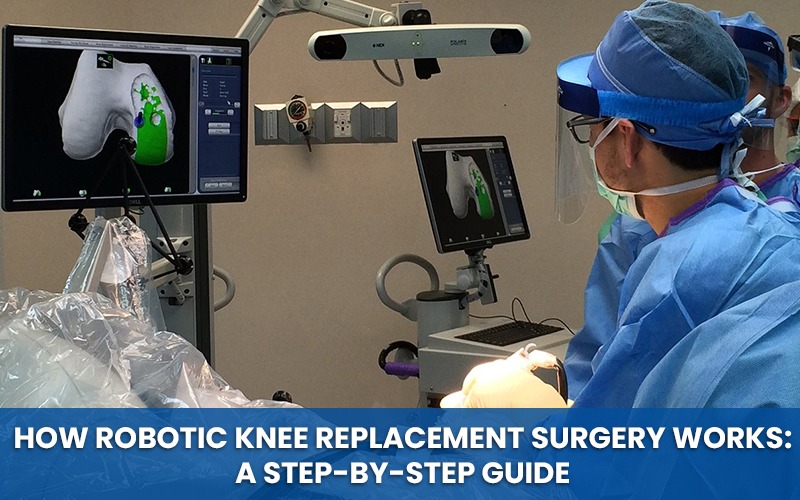
Robotic knee replacement surgery is an advanced surgical procedure that uses a robotic arm to assist a surgeon in performing a knee replacement surgery. This technology allows for improved accuracy and precision during the surgery, resulting in better outcomes for the patient. In this article, we will provide a step-by-step guide on how robotic knee replacement surgery works.
Step 1: Preoperative Planning
The first step in robotic knee replacement surgery is preoperative planning. This involves taking a CT scan of the patient’s knee joint and using that data to create a 3D model of the joint. This model is used to plan the surgery, including the size and position of the implant.
During the planning stage, the surgeon will also determine the best approach for the surgery based on the patient’s specific needs. This may involve deciding whether a total knee replacement or a partial knee replacement is necessary.
Dr Saurabh Giri, a knee replacement surgeon in Pune, emphasizes the importance of preoperative planning in robotic knee replacement surgery. “Accurate planning is crucial for achieving optimal outcomes in robotic knee replacement surgery. The robotic system allows us to create a highly personalized surgical plan for each patient, based on their unique anatomy and alignment.”
Step 2: Patient Preparation
Once the preoperative planning is complete, the patient will undergo several tests to ensure they are healthy enough for surgery. This may include blood tests, X-rays, and electrocardiograms. The patient will also be asked to stop taking certain medications, such as blood thinners, in the days leading up to the surgery.
On the day of the surgery, the patient will be given anesthesia to ensure they are comfortable during the procedure.
Step 3: Robotic Arm Setup
After the patient is under anesthesia, the surgeon will set up the robotic arm. The arm is attached to a computer that communicates with the 3D model of the patient’s knee joint. The surgeon will then use the arm to make precise incisions and remove the damaged tissue and bone from the knee joint.
Step 4: Robotic Arm Guidance
Once the robotic arm is set up, the surgeon will use it to guide the surgical instruments during the procedure. The arm provides real-time feedback to the surgeon, ensuring that the implant is placed accurately and precisely.
The surgeon can also adjust the position of the implant as necessary during the surgery, ensuring the best fit for the patient’s knee joint.
Step 5: Implant Placement
After the damaged tissue and bone have been removed, the surgeon will place the implant into the knee joint. The implant may be made of metal, plastic, or a combination of materials. The implant is designed to fit securely into the joint, allowing for improved joint function and reduced pain.
Step 6: Closing the Incision
Once the implant is in place, the surgeon will close the incision using stitches or staples. The patient will then be taken to a recovery area where they will be monitored closely as they wake up from the anaesthesia.
Step 7: Recovery and Rehabilitation
After the surgery, the patient will need to stay in the hospital for several days to recover. They will be given pain medication and antibiotics to prevent infection. Physical therapy will also be started soon after surgery to help the patient regain strength and mobility in their knee joint.
The recovery period for robotic knee replacement surgery is generally shorter than traditional knee replacement surgery. Patients can typically start walking and performing daily activities within a few weeks of the surgery.
Conclusion
Robotic knee replacement surgery is a relatively new technology that offers several advantages over traditional knee replacement surgery. The precise guidance provided by the robotic system allows for more accurate bone cuts, precise placement of the prosthetic components, and optimal alignment of the knee joint. As a result, patients who undergo robotic knee replacement surgery often experience less pain, a faster recovery time, and better overall function compared to those who undergo traditional knee replacement surgery.
Dr Saurabh Giri, a knee replacement surgeon in Pune, is at the forefront of this innovative technology. He has extensive experience in performing robotic knee replacement surgery and is dedicated to providing his patients with the highest quality care. If you are considering knee replacement surgery, visit kneereplacementsurgeonpune.com/




